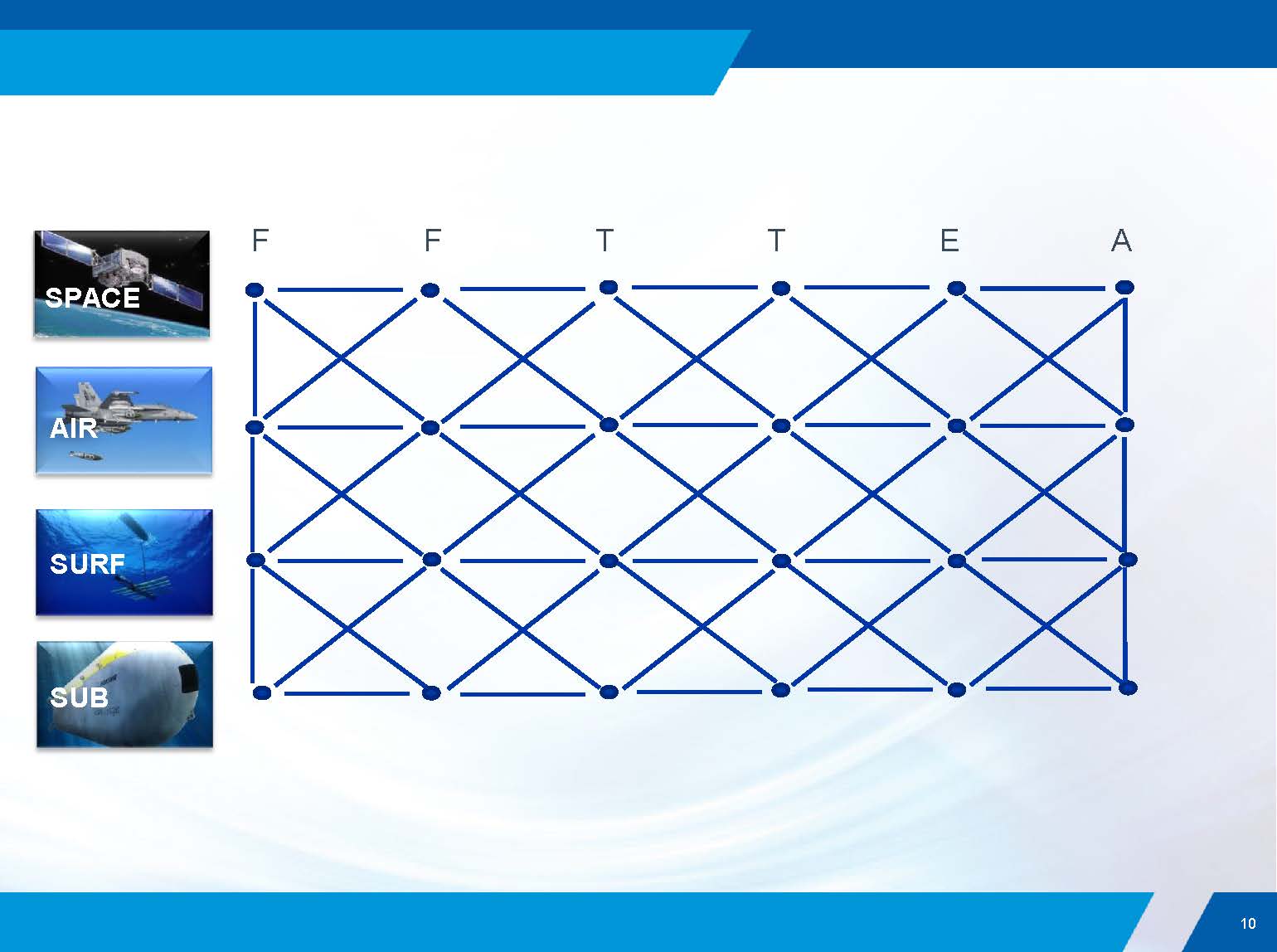We are focusing on several aspects of change in the global strategic situation as well the approach which U.S. and allied forces are taking to engage effectively as the strategic situation changes.
One key dynamic of change is the distribution of sensors and strike throughout the battlespace and the use of C2 and task forces to concentrate force on leveraging a strike and sensing grid to gain combat dominance.
When Rear Admiral Manazir was the commanding officer of N-9, Deputy Chief of Naval Operations for Warfare Systems, we discussed with him the core concept and its implications.
The kill chain is a linear concept which is about connecting assets to deliver fire power; the kill web is about distributed operations and the ability of force packages or task forces to deliver force dominance in an area of interest.
It is about building integration from the ground up so that forces can work seamlessly together through multiple networks, rather than relying on a single point of failure large network.
And when discussing how the USAF and US Navy need to work more effectively together in the future, this is how he put it:
How do we achieve distributed effects across all domains in the battlespace?
We are working closely with General Goldfein through various Service interaction groups; most effectively at the highly classified level.
We talk about issues that are common to our Services on a regular basis.
The core commonality between the two is that both are expeditionary services.
When we get into the battle area, Air Force assets can strike, reset, and strike again.
Naval forces operating in the maritime domain provide persistence.
If you combine Air Force and Naval combat capabilities you have a winning combination.
If you architect the joint force together, you achieve a great effect.
It is clear that C2 (command and control) is changing and along with it the CAOC (Combined Air and Space Operations Center).
The hierarchical CAOC is an artifact of nearly 16 years of ground war where we had complete air superiority; however, as we build the kill web, we need to be able to make decisions much more rapidly.
As such, C2 is ubiquitous across the kill web.
Where is information being processed?
Where is knowledge being gained?
Where is the human in the loop?
Where can core C2 decisions best be made and what will they look like in the fluid battlespace?
The key task is to create decision superiority.
But what is the best way to achieve that in the fluid battlespace we will continue to operate in?
What equipment and what systems allow me to ensure decision superiority?
We are creating a force for distributed fleet operations.
When we say distributed, we mean a fleet that is widely separated geographically capable of extended reach.
Importantly, if we have a network that shares vast amounts of information and creates decision superiority in various places, but then gets severed, we still need to be able to fight independently without those networks.
This requires significant and persistent training with new technologies but also informs us about the types of technologies we need to develop and acquire in the future.
Additionally, we need to have mission orders in place so that our fleet can operate effectively even when networks are disrupted during combat; able to operate in a modular-force approach with decisions being made at the right level of operations for combat success.
Rear Admiral Manazir has retired from the US Navy and now is working with Boeing.
Recently, he came to Australia to participate in his third Williams Foundation Conference, but the first one as a civilian.
AT this seminar, and speaking in a private capacity, he provided an update on how he analyzed the shift to fifth generation warfare and crafting a kill web approach.
That briefing can be read below:


